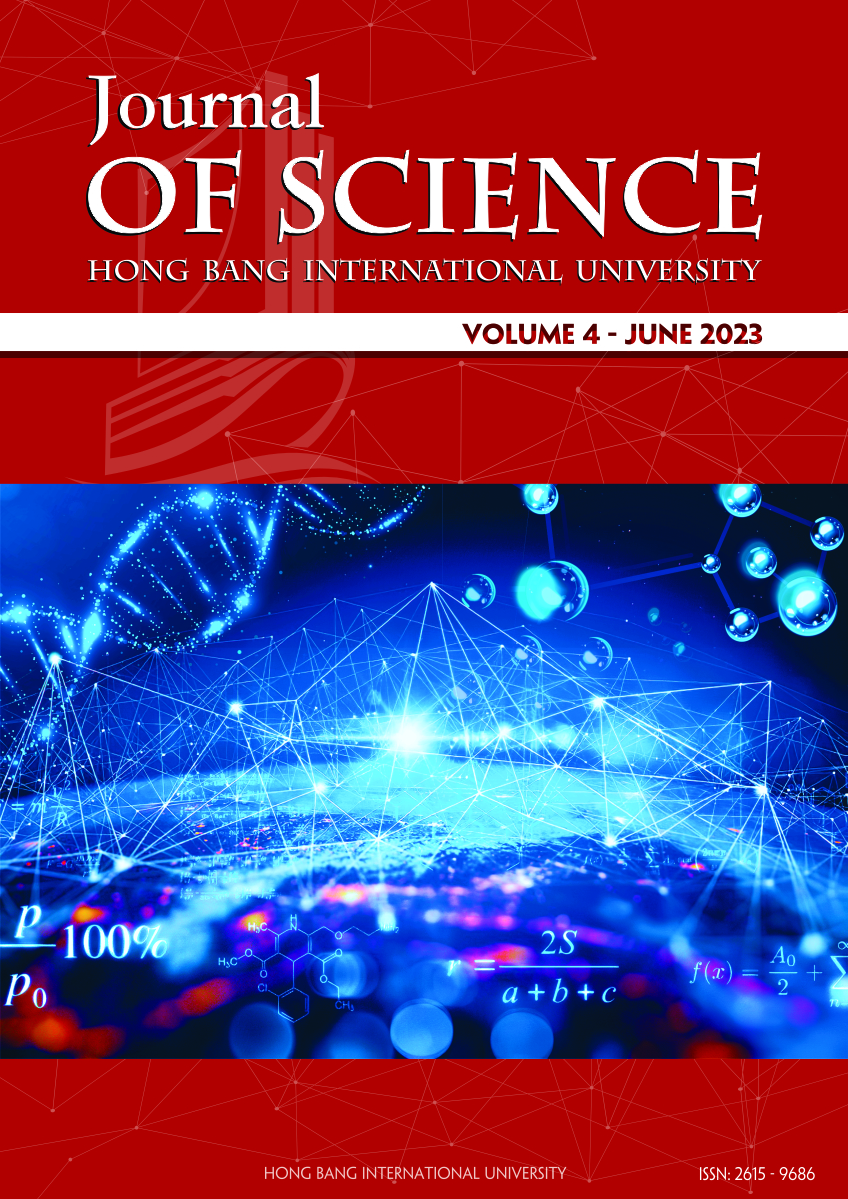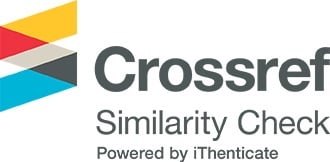Exploring the skin whitening properties of natural products: A comprehensive review
Các tác giả
DOI: https://doi.org/10.59294/HIUJS.VOL.4.2023.390Từ khóa:
skin-whitening property, melanin production, nature productsTóm tắt
Natural products have been gaining popularity in recent years as a safe skin-safe alternative solution to synthetic products on the market. In particular, natural ingredients have been found to have skin-whitening properties by inhibiting melanin production and reducing hyperpigmentation. This review provides the analysis of some mechanisms and effectiveness of natural products in achieving even skin tone and reducing the appearance of dark spots. Several natural ingredients, such as chemical compounds in licorice root, green tea extract, and vitamin C, have been tested for their ability to reduce tyrosinase activity and melanin synthesis, as well as for their anti-inflammatory and antioxidant properties. In addition, the selection of uses and further research into the safety and effectiveness of natural products. Overall, natural products represent a safe and effective solution to achieving brighter, more radiant skin.
Abstract
Natural products have been gaining popularity in recent years as a safe skin-safe alternative solution to synthetic products on the market. In particular, natural ingredients have been found to have skin-whitening properties by inhibiting melanin production and reducing hyperpigmentation. This review provides the analysis of some mechanisms and effectiveness of natural products in achieving even skin tone and reducing the appearance of dark spots. Several natural ingredients, such as chemical compounds in licorice root, green tea extract, and vitamin C, have been tested for their ability to reduce tyrosinase activity and melanin synthesis, as well as for their anti-inflammatory and antioxidant properties. In addition, the selection of uses and further research into the safety and effectiveness of natural products. Overall, natural products represent a safe and effective solution to achieving brighter, more radiant skin.
Tài liệu tham khảo
[1] Telang PS, “Vitamin C in dermatology”, Indian Dermatol Online J,4(2),143-146, 2013.
DOI: https://doi.org/10.4103/2229-5178.110593[2] Pullar JM, Carr AC, Vissers MCM, “The roles of vitamin C in skin health”, Nutrients, 9(8),866, 2017.
DOI: https://doi.org/10.3390/nu9080866[3] Damle Joshi, Monica, “Glycyrrhiza glabra (Liquorice) -a potent medicinal herb”, International Journal of Herbal Medicine, 132. 132-136, 2014.
[4] Tchanque-Fossuo, C. N., & Taylor, H. O., “Current concepts in skin whitening agents”, Dermatologic clinics, 37(2),147-153, 2019.
[5] Polnikorn, N., “Treatment of refractory melasma with the MedLite C6 Q-switched Nd: YAG laser and alpha arbutin: a prospective study”, Journal of cosmetic and laser therapy, 14(3), 115-120, 2012.
[6] Cho, S. B., Lee, S. J., Kang, J. M., Kim, Y. K., & Chung, W. S., “Intense pulsed light therapy for the treatment of melasma in Asian patients”, Dermatologic surgery, 40(11), 1196-1203, 2014.
[7] Kwon, H. H., Lee, S. Y., Yoon, H. S., & Youn, J. I., “Comparative study of 1550 nm fractional photothermolysis and microdermabrasion for facial melasma in Asian patients: a randomized prospective clinical trial”, Journal of cosmetic and laser therapy, 15(6), 310-316, 2013.
[8] Khunger, N., “Standard guidelines of care for chemical peels”, Indian journal of dermatology, 59(2), 95, 2014.
[9] Jin, S. P., Cho, S., Park, M. Y., Shin, J. U., & Lee, J. H., “Treatment of melasma with cryotherapy”, Dermatologic surgery, 42(4), 496-502, 2016.
[10] Farid, K., & Zedan, W., “Dermabrasion in facial skin resurfacing: an overview. Journal of cosmetic dermatology”, 15(2), 111-124, 2016.
[11] Alster, T. S., & Graham, P. M., “Microneedling: a review and practical guide”, Dermatologic surgery, 44(3), 397-404, 2018.
DOI: https://doi.org/10.1097/DSS.0000000000001248[12] S, Laxmi., “Herbal Cosmetics and Cosmeceuticals: An Overview”, Joshi and Pawar Nat Prod Chem Res, Volume 3, Issue 2, 1000169, 2015.
DOI: https://doi.org/10.4172/2329-6836.1000170[13] Chang TS, “An updated review of tyrosinase inhibitors”, Int J Mol Sci, 10(6),2440-2475, 2009.
DOI: https://doi.org/10.3390/ijms10062440[14] Sugimoto K, Nishimura T, Nomura K, Sugimoto K, Kuriki T, Ishii Y, et al, “Inhibitory effects of α-arbutin on melanin synthesis in cultured human melanoma cells and a three-dimensional human skin model”, Biol Pharm Bull, 27(4),510-4, 2004.
DOI: https://doi.org/10.1248/bpb.27.510[15] Kim YJ, Uyama H, “Tyrosinase inhibitors from natural and synthetic sources: structure, inhibition mechanism and perspective for the future”, Cell Mol Life Sci, 62(15),1707-23, 2005.
DOI: https://doi.org/10.1007/s00018-005-5054-y[16] Machado-Santelli GM, Carvalho FA, Lemos M, Farsky SHP, “The effect of ascorbic acid on melanoma cell proliferation and the expression of MMP-2 and MMP-9”, J Venom Anim Toxins incl Trop Dis, 16(3),448-456, 2010.
[17] Lee JM, Kim YJ, Jung E, Lee JS, Yoon DH, Kim YH, “Anti-melanogenic effects of glabridin and glycyrrhizic acid in activated melanocytes”, Biomol Ther (Seoul), 26(5),422-429, 2018.
[18] Li S, Zhang C, Wang J, et al, “Licorice extract promotes skin whitening by inhibiting melanin synthesis via the phosphatidylinositol 3-kinase/protein kinase B/mitogen-activated protein kinase pathway”, Exp Dermatol, 28(2),198-204, 2019.
[19] Zhang M, Du GJ, Wang Y, et al, “Topical application of glycyrrhetinic acid modified hydroxypropyl chitosan for skin-whitening: formulation optimization, characterization, and evaluation”, Int J Nanomedicine, 14,6771-6785, 2019.
[20] Wang Y, Zhang J, Liu Y, et al, “Arbutin inhibits melanin synthesis through the tyrosinase pathway”, Biol Pharm Bull, 41(7),1114-1119, 2018.
[21] Boo, Y.C, “Arbutin as a Skin Depigmenting Agent with Antimelanogenic and Antioxidant Properties”, Antioxidants, 10, 1129, 2021.
DOI: https://doi.org/10.3390/antiox10071129[22] Saeedi M, Eslamifar M, Khezri K, et al, “Kojic Acid Applications in Cosmetic and Pharmaceutical Preparations”, Biomed Res Int, 9646274, 2019.
DOI: https://doi.org/10.1016/j.biopha.2018.12.006[23] Kim J, Lee J, Kwon SH, et al, “Kojic acid inhibits melanogenesis in alpha-MSH-stimulated B16F10 melanoma cells by suppressing tyrosinase activity and modulating microphthalmia-associated transcription factor expression”, Biomol Ther (Seoul), 26(3),268-273, 2018.
[24] Kim JE, Park HS, “Mulberry Extract Inhibits Melanin Synthesis by Regulating Tyrosinase Expression in Murine B16 Melanoma Cells”, Ann Dermatol, 28(2),147-155, 2016.
[25] Zhang, Y., Liu, Y., Liu, Y., Zhang, X., Wang, X., & Wang, S., “Mulberry extract‐induced mitochondrial biogenesis attenuates oxidative stress‐mediated apoptosis in human skin fibroblasts”, Journal of cellular biochemistry, 120(5), 7596-7607, 2019.
[26] Hsu, S., Chen, J., Li, D., & Lee, C, “Mulberry leaf extract inhibits melanogenesis through regulating the PI3K/Akt and MAPK/ERK signaling pathways.” Journal of food and drug analysis, 26(1), 275-282, 2018.
[27] Bissett DL, “Niacinamide: A B vitamin that improves aging facial skin appearance.” Dermatol Surg, 31(7 Pt 2),860-866, 2005.
DOI: https://doi.org/10.1111/j.1524-4725.2005.31732[28] Kim, S. K., Kim, M. K., Lee, J. H., Kim, H. R., Lee, M. K., & Kim, Y. J., “A randomized, double-blind, placebo-controlled clinical study to evaluate the efficacy and safety of a novel niacinamide-containing formulation for reduction of hyperpigmentation and improvement of skin texture in patients with moderate to severe facial hyperpigmentation”. Journal of cosmetic dermatology, 17(2), 223-229, 2018.
Tải xuống
Tải xuống: 682











